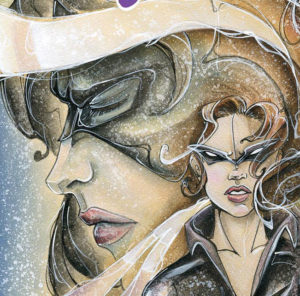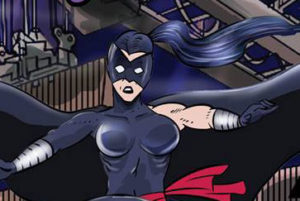3 Secrets Comic Books Teach Book Writers

When I was tapped to become the editor by Gateway Comics Presents for their webcomic The Stalker, I was in for a surprise. I expected the written format would be different (it is) and the pacing much different (it is). I knew each word must function on multiple levels (true as well). Yet I also learned there are valuable lessons a book writer can learn by viewing and reading comic books.
Growth – in Comic Books:
First, if you haven’t read any comic books for some time, it is a wildly new world today compared to past decades. Comic books have had a long and vibrant history. Comic book history spans five recognized periods (a Golden Age, Silver Age, Bronze Age, Dark Age and what is termed today the Ageless Age).
They aren’t just for children nor do they all offer superheroes who always win out against their adversaries. Adult content and social commentary comics are published as well as the traditional hero-and-villain and children’s genres.
Growth – in Books:
Books have likewise changed dramatically over the decades. Writing published a few decades ago is slower paced than books recently written. The number of genres has multiplied tremendously. For example, for just fantasy alone, Wikipedia lists 27 subgenres and the Best Fantasy Books website lists 64 subgenres (7 of which were recently added).
Just start clicking on Amazon’s list of categories, and you can drill down to numerous categories that didn’t exist only a few years ago. The changes in both industries offer glowing opportunities; writers have more options and markets where they can attract specific readers.
SECRET #1: Dig into the Niches
Too many writers forget to dig into the new trends in their preferred genre. Explore the deep niches of your writing genre. Look for areas where there is an interest by readers but not a glut of books—yet. If it fits your style of writing, then fill that need!

Detail from Stalker #1 by artist Sara Richard
Consistency vs. Variety
The comic book world couples writers with illustrators in an important—but fluid—collaboration. Illustrations are crucial factors in comics as they provide a visual effect that is powerful. Yet illustrators come and go throughout a comic’s lifetime. Which means different illustrators with different talents and visions take up the mantle of the art over the years that a comic series exists. The result? The “look” of a hero or heroine depicts a different tone or flavor. The top illustration in this post is by artist Marcos Gratao, the next by Sara Richard and the last by Fabio Silva.
This seems to fly in the face of the rule for consistency, yet it can be a stimulating experience for both the comic writer and for the reader as well! Plus it reflects reality. Characters, like people, have different phases in our lives and different moods.
Book writers who write a series of books also deal with the changes in their protagonist. Each book’s situation builds that main character’s personality. Readers love seeing how a situation in a past book has matured (or crippled or healed or whatever change you wish) your character and influenced the latest story.
Consistency is important, but there is a natural growth process in all of our lives. And that growth process needs to be echoed in our fictional characters.
SECRET #2: Let Them Grow
Allow your characters to grow naturally. It will keep readers enjoying the progress of your protagonist.
Verbal vs. Visual
Comics have one distinct advantage: comics readers can “see” the changes as well as read about them!
Take a look at the three versions of The Stalker on this page. Each represents the same heroic woman yet from the hand of a different artist. (You can read about how this comic story was created and grew and how each illustrator fit into its history by clicking on this link.)
Each artist envisioned The Stalker differently. Each illustration shows similarities, but the tone and details vary. Comic readers are visually clued into the fact that this particular story is different, as Stalker faces new adversaries or issues through that artist’s eyes.
Readers of your books will likewise see your protagonist through their own eyes but in the case of a book, using just your text about the story’s circumstances. Your job as the author is to give just enough detail and background to entice readers–then the reader’s imagination can take over.

Detail from Stalker #6 by artist Fabio Silva
SECRET #3: Vary the Tone
To keep stories fresh, especially in a series, vary the tone of your scenes. Some scenes may be dark and difficult; others light and hopeful. Each type of scene challenges the protagonist differently and allows you to show all the sides of his or her personality.
In the process, as your character grows and faces new circumstances, readers will see someone they recognize.
Maybe they will even see themselves in that hero you have depicted saving the world!
Want personal help with your writing project?
Contact me directly with an email and let’s discuss YOUR book project!
 Sandra Haven, Editor
Sandra Haven, Editor
Join me on Facebook and Twitter
Leave a comment:





